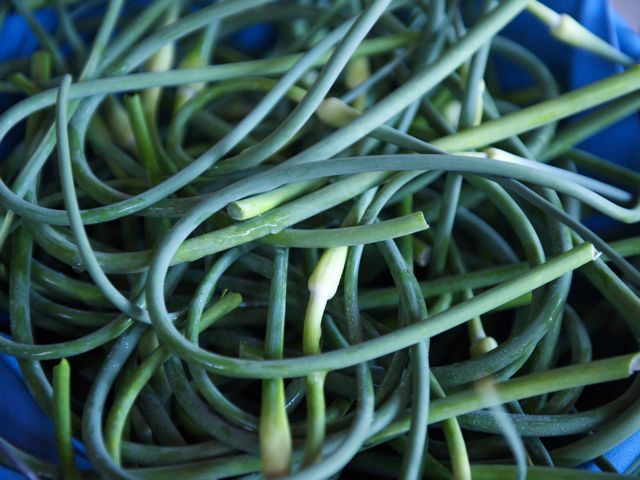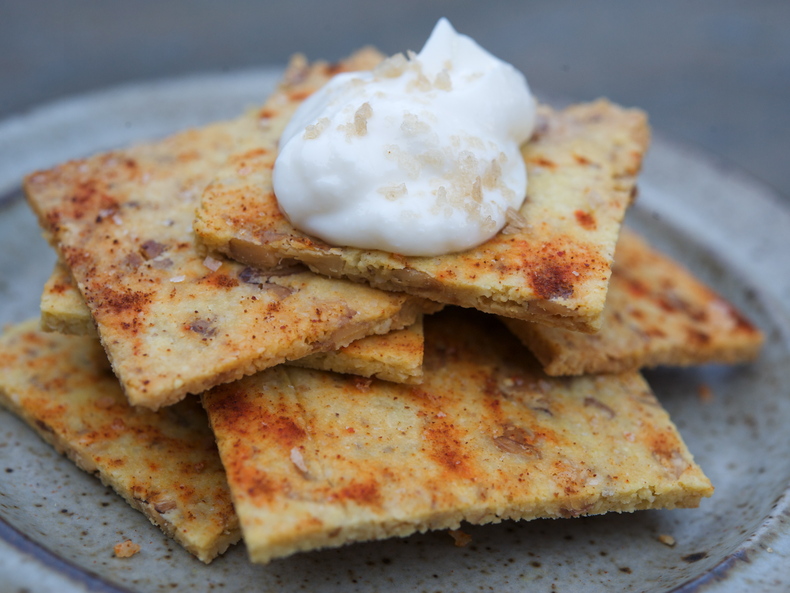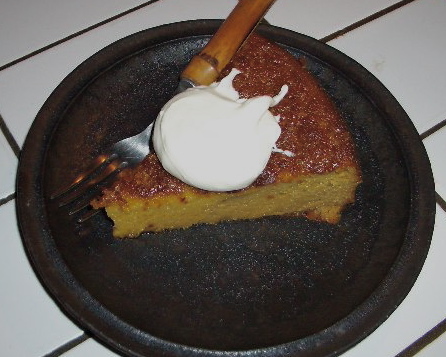You’re probably seeing garlic scapes at your local farmers markets right about now. They are those unruly shoots that spring from the tops of garlic plants (much like hair springs from my head most mornings). A beautiful, bright green, scapes have a garlicky fragrance flavor that is milder, fresher and more grassy than garlic bulbs. (The scapes are cut in order to strengthen the growth of the bulbs underground.) Try them raw, or lightly cooked in a stir-fry. This pesto recipe shows them off nicely, and is great as a dip, stirred into hot pasta, eaten with cheese or spread on a sandwich.
Read More...
Twitter @glutton4life
5.21.10 Wafer Thin
As I've mentioned before, ours is a gluten-free household. This does not mean we don't LOVE bread but G, my husband, was diagnosed as "gluten intolerant" a couple of years ago and tries his best to eat accordingly. (I support him in this, and feel it has done me a world of good as well.) Gluten is the gluey, stretchy stuff that gives products made from wheat, rye and barley their wonderfully meaty chew. Sadly, for celiacs and people with gluten intolerance, this is the same stuff that irritates the villi—microscopic finger-like projections that line the inner wall of the small intestine and aid in the absorption of food. In learning about this condition, I've come across a lot of information to indicate that refined highly processed flours are not so good for any of us. (I believe I already told you that my nutritionist, Sally Kravich, equates eating white flour with smearing your colon with that paste we used to make in elementary school.) The rise of inflammatory diseases like arthritis, colitis, IBS and even tooth decay is directly associated with the rise of agriculture and industry. Just try cutting out grains and starches from your diet for even 2 weeks to see how your aches and pains diminish. It's pretty amazing. But didn't our ancestors manage just fine eating grains, you ask? Actually, their approach to grains and baking was quite different from ours. Virtually all preindustrialized people soaked or fermented their grains before making them into porridge or bread or cake. Think how Indians ferment rice or lentils before making idlis and dosas; or how American pioneers made their breads and pancakes with sourdough starter. Way back when, instructions on the box of oatmeal even called for an overnight soak. Here's the science behind it (with thanks to Nourishing Traditions for breaking it down so intelligibly).
Read More...
Read More...
11.12.09 This Cake is the M Word
When my husband finally realized he was gluten-intolerant (after many years of horrible heartburn and at-times-comical flatulence), I had to abandon many of my special-occasion desserts. Of course there are great alternative flours from Bob's Red Mill (his all-purpose is a mix of garbanzo, fava, tapioca and sorghum) but it was also interesting to pursue baking without any flour at all. This particular cake recipe is based on ground almonds. It would also come in handy for Passover as it uses no leavening. I'm not really sure where it originated. Martha has a version with a schmancy topping. The New Yorker once featured Claudia Roden's. Of course I like mine quite a bit, even though I can't bear to use the word that best describes it:
Read More...
Read More...










